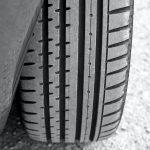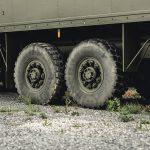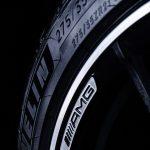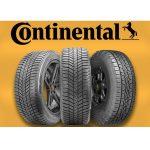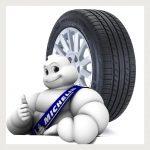Car Tire Size Chart And Sizing Guide
When your car’s tires are too small, it can be dangerous to drive on the highway. The car will be more difficult to control and you may end up in a serious accident. On the other hand, if your car has oversized tires, it may be too difficult to turn and accelerate. Your car could end up in a skid, which is dangerous as well. Read on how to use a car tire size chart to find the correct tire size for your car and for optimal performance.
Looking for branded Car tires sizes? Check the Michelin, Continental, Goodyear,… size charts
How To Use The Car Tire Size Chart?
The car tire size chart is simple to use. The first step is to figure out what tire type you have on your car. There are three types: radial, bias-ply, and belted bias. You can usually tell by looking at the sidewall of the tire. If you see letters, then you have bias-ply tires. If there are numbers on the sidewall, then your car has radial tires.
Belted bias tires look like they’re made of rubber bands. To know if your tire is a belted bias or not, you must check the tread pattern. If it looks like an “S” shape, then it’s a belted bias.
The chart below is to help you cross-reference between the different sizes and base on the different types of the car tire.
| Radial Tire and Bias-Ply Cross-Reference Size Chart | ||||||||
| Models Pre-1964 | 1965 to 1972 | 80 series metric | Alpha Numeric 78 Series | Alpha Numeric 70 Series | P-Metric Tires (75 series Radial) | P-Metric Sizes (70 Series Radial) | Recommended rim size in inches | Recommended rim size in mm |
| 520-12 | – | 125-12 | – | – | P125/75R12 | – | 4-5 | 102-127 |
| 520-13 | 560-13 | 155-13 | – | – | P155/75R13 | P155/70R13 | 4-5 | 102-127 |
| 590-13 | 600-13 | 165-13 | A78-13 | – | P165/75R13 | P175/70R13 | 4-5 | 102-127 |
| 640-13 | 650-13 | 175-13 | B78-13 | – | P175/75R13 | P185/70R13 | 4-6 | 102-152 |
| 725-13 | 700-13 | 185-13 | D78-13 | – | P185/75R13 | P205/70R13 | 4-6 | 102-152 |
| 590-14 | 645-14 | 155-14 | B78-14 | – | P175/75R14 | P185/70R14 | 4-6 | 102-152 |
| 650-14 | 695-14 | 175-14 | C78-14 | – | P185/75R14 | P195/70R14 | 4-6 | 102-152 |
| 700-14 | 735-14 | 185-14 | E78-14 | E70-14 | P195/75R14 | P205/70R14 | 4-6 | 102-152 |
| 750-14 | 775-14 | 195-14 | F78-14 | F70-14 | P205/75R14 | P215/70R14 | 4-6 | 102-152 |
| 800-14 | 825-14 | 205-13 | G78-14 | G70-14 | P215/75R14 | P225/70R14 | 5-7 | 127-178 |
| 850-14 | 855-14 | 215-14 | H78-14 | – | P225/75R14 | P235/70R14 | 5-7 | 127-178 |
| 590-16 | 600-15 | 165-15 | A78-15 | – | P165/75R15 | P175/70R15 | 4-5 | 102-127 |
| 640-15 | 685-15 | 175-15 | C78-15 | – | P175/75R15 | P185/70R15 | 5-6 | 127-152 |
| 650-15 | 735-15 | 185-15 | E78-15 | E70-15 | P195/75R15 | 5-6 | 127-152 | |
| 670-15 | 775-15 | 195-15 | F78-15 | F70-15 | P205/75R15 | P215/70R15 | 5-7 | 127-178 |
| 710-15 | 825-15 | 205-15 | G78-15 | G70-15 | P215/75R15 | P225/70R15 | 6-8 | 152-203 |
| 760-15 | 855-15 | 215-25 | H78-15 | H70-15 | P225/75R15 | P235/70R15 | 6-8 | 152-203 |
| 800-15 | 885-15 | 230-15 | J78-15 | K70-15 | P235/75R15 | P235/70R15 | 6-8 | 152-203 |
| 820-15 | 900-15 | 235-15 | L78-15 | L70-15 | P235/75R15 | P255/70R15 | 6-8 | 152-203 |
Pro Tip: Always consult your car owner’s manual before making any changes to your car. The car tire size chart is just a guide to help you make the best decision for your vehicle.
How To Read Your Sidewall Marking on Tires?

Sidewalls of tires usually have markings that show tire information. Here are some of the information you can get.
A. Class of tire
The class of tire will be indicated on the tire wall. P stands for passenger car tires such as crossovers, SUVs. L stands for a light truck tire. This is designed for cars for towing cars. ST is for special trailers such as cars with fifth wheels, boats, and winter tires.
If the tire did not have a letter, it is in metric measurement wherein the measurement is in millimeters.
B. Section width
This is the tire’s width. Look for the number to see how wide your tires are in millimeters. In the image above, the section width is 215 millimeters (8.46 inches). How to measure the tire width? You will need to measure the distance from the sidewall edge across to the opposite side.
C. Aspect ratio
This is the tire’s height-to-width ratio and is usually indicated by a letter such as 80, 70, or 60 (80 means that it has an aspect ratio of 80%.) The higher the number, the taller your tire is. How to measure the tire sidewall height? You will need to measure the tire sidewall height from rim edge to tread face.
D. Construction Type
This indicates the type of construction inside the tire. The two most common types are radial and bias-ply. R stands for radial while B stands for bias-ply. Radial construction type means that the cords that run across the tire are at a 90-degree angle to the direction of travel. This type is usually used on modern cars. Bias-ply construction type means that the cords are at an angle less than 90 degrees and were more commonly used in older vehicles.
E. Wheel Diameter
Wheel diameter also known as wheel rim diameter indicates the tire’s outer width. It is usually measured in inches and can be found on your car owner’s manual or door jamb sticker.
F. Load Index
This number ranges from 65 to 150 which measures the load-carrying capacity of a tire when properly inflated for inflation pressure at maximum load, but should never be used as the only indicator of tire safety. Carrying too much weight on a tire can overload it and will cause sidewall failure, blowouts, or catastrophic damage. Consult your car owner’s manual to find out how much weight your vehicle can safely carry.
Here’s a table of the load capacity based on load index.
| Load Index | Load Capacity (lbs) | Load Capacity (kg) |
| 65 | 639 | 289.85 |
| 66 | 661 | 299.82 |
| 67 | 677 | 307.08 |
| 68 | 694 | 314.79 |
| 69 | 716 | 324.77 |
| 70 | 739 | 335.20 |
| 71 | 761 | 345.18 |
| 72 | 783 | 355.16 |
| 73 | 805 | 365.14 |
| 74 | 827 | 375.12 |
| 75 | 853 | 386.91 |
| 76 | 882 | 400.07 |
| 77 | 908 | 411.86 |
| 78 | 937 | 425.02 |
| 79 | 963 | 436.81 |
| 80 | 992 | 449.96 |
| 81 | 1019 | 462.21 |
| 82 | 1047 | 474.91 |
| 83 | 1074 | 487.16 |
| 84 | 1102 | 499.86 |
| 85 | 1135 | 514.83 |
| 86 | 1168 | 529.80 |
| 87 | 1201 | 544.76 |
| 88 | 1235 | 560.19 |
| 89 | 1279 | 580.14 |
| 90 | 1323 | 600.10 |
| 91 | 1356 | 615.07 |
| 92 | 1389 | 630.04 |
| 93 | 1433 | 650.00 |
| 94 | 1477 | 669.96 |
| 95 | 1521 | 689.91 |
| 96 | 1565 | 709.87 |
| 97 | 1609 | 729.83 |
| 98 | 1653 | 749.79 |
| 99 | 1709 | 775.19 |
| 100 | 1764 | 800.14 |
| 101 | 1819 | 825.08 |
| 102 | 1874 | 850.03 |
| 103 | 1929 | 874.98 |
| 104 | 1984 | 899.93 |
| 105 | 2039 | 924.87 |
| 106 | 2094 | 949.82 |
| 107 | 2149 | 974.77 |
| 108 | 2205 | 1000.17 |
| 109 | 2271 | 1030.11 |
| 110 | 2337 | 1060.05 |
| 111 | 2403 | 1089.98 |
| 112 | 2469 | 1119.92 |
| 113 | 2535 | 1149.86 |
| 114 | 2601 | 1179.79 |
| 115 | 2679 | 1215.17 |
| 116 | 2756 | 1250.10 |
| 117 | 2833 | 1285.03 |
| 118 | 2910 | 1319.95 |
| 119 | 2998 | 1359.87 |
| 120 | 3086 | 1399.79 |
| 121 | 3197 | 1450.13 |
| 122 | 3307 | 1500.03 |
| 123 | 3417 | 1549.93 |
| 124 | 3527 | 1599.82 |
| 125 | 3638 | 1650.17 |
| 126 | 3748 | 1700.06 |
| 127 | 3858 | 1749.96 |
| 128 | 3968 | 1799.85 |
| 129 | 4079 | 1850.20 |
| 130 | 4189 | 1900.10 |
| 131 | 4299 | 1949.99 |
| 132 | 4409 | 1999.89 |
| 133 | 4541 | 2059.76 |
| 134 | 4674 | 2120.09 |
| 135 | 4806 | 2179.96 |
| 136 | 4938 | 2239.84 |
| 137 | 5071 | 2300.17 |
| 138 | 5203 | 2360.04 |
| 139 | 5357 | 2429.89 |
| 140 | 5512 | 2500.20 |
| 141 | 5677 | 2575.04 |
| 142 | 5842 | 2649.89 |
| 143 | 6008 | 2725.18 |
| 144 | 6173 | 2800.03 |
| 145 | 6393 | 2899.82 |
| 146 | 6614 | 3000.06 |
| 147 | 6779 | 3074.90 |
| 148 | 6944 | 3149.75 |
| 149 | 7165 | 3249.99 |
| 150 | 7385 | 3349.78 |
In the image above, the load index is 95 so the load capacity is 1521 lbs (689.91 kgs).
G. Speed Rating
This letter is an indication of the maximum speed that the tire is capable of. Speed ratings are A1 to (Y). Higher ratings mean a higher top speed for your car. Consult your car owner’s manual to find out what speed rating your vehicle should have.
| Tire Speed Ratings | Speed |
| A1 | 3 |
| A2 | 6 |
| A3 | 9 |
| A4 | 12 |
| A5 | 16 |
| A6 | 19 |
| A7 | 22 |
| A8 | 25 |
| B | 31 |
| C | 37 |
| D | 40 |
| E | 43 |
| F | 50 |
| G | 56 |
| J | 62 |
| K | 68 |
| L | 75 |
| M | 81 |
| N | 87 |
| P | 93 |
| Q | 99 |
| R | 106 |
| S | 112 |
| T | 118 |
| U | 124 |
| H | 130 |
| V | 149 |
| W | 168 |
| Y | 186 |
| (Y) | Above 186 |
In the image above, the speed rating is V which has a maximum speed of 149 mph.
Car Tires Sizing explained (video)
Conclusion on car tires sizing
Car tires are an important component of your car, providing grip to the ground while traveling at different speeds. They also provide stability for normal driving conditions as well as when braking or turning corners. The right sizes of car tires can make a big difference in safety, performance, and fuel efficiency so it’s important to understand how they work before buying new ones for your vehicle.
Picture in this post by LOGAN WEAVER on Unsplash
Related Tires Size charts
- Tire Size Chart for all vehicles: What do tire size numbers mean?
- Toyota Tire Size Guide (Size Charts and Dimensions Included)
- Honda Tire Size Guide And Types of Tires
- Chevrolet Tire Size Guide for Different Models
- Ram tire size guide for all models (size charts and dimensions included)
- Tesla Tire Size by model and year
- Truck Tire Size Chart And Sizing Guide
- Car Tire Size Chart And Sizing Guide
- Cateye Tire Size Chart: Measurements
- Jeep Tire Size: find the perfect tires for your jeep
- Understanding a Tire Speed Rating Chart – why is Speed rating important?
- Trailer Tire Size Chart – Get the perfect size for your trailer tires
- Continental Tire Size Chart
- Michelin Tire Size Chart
- Tires Charts

